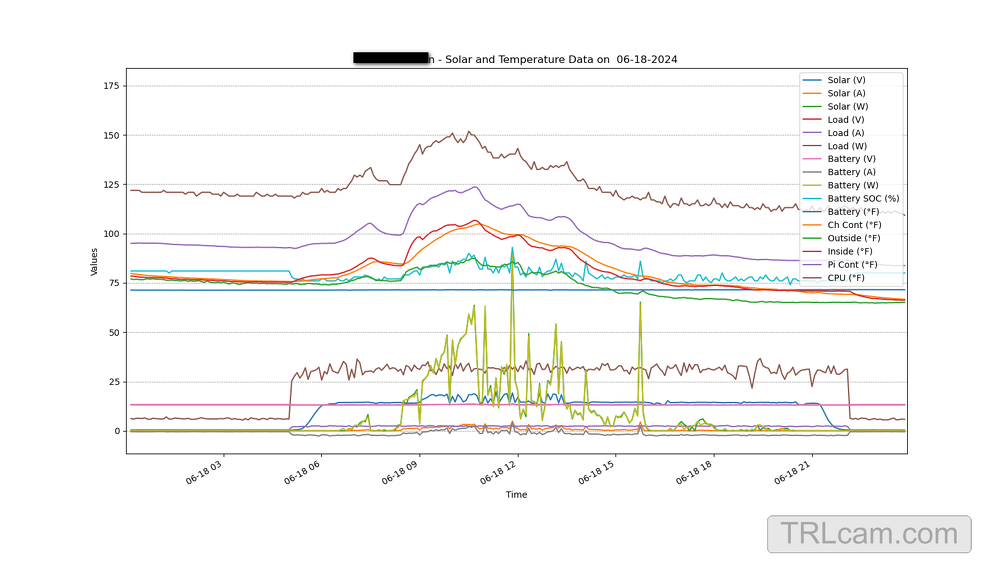Last year we were commissioned to design and install camera systems around the state that will be used to monitor the presence of a endangered wildlife species. The requirements were a good PTZ camera, solar power, remote system monitoring, customers ability to record still images and record video. Must work in the states temperature extremes of +105F and -25F. The system was designed around a Dahua 4mp PTZ camera with a 45x zoom mounted on a 15' tower set in concrete. Power is provided by three 100 watt solar panels run into a MPPT solar charge controller. Power storage is provided by two 100Ah LiFePo4 batteries. To accommodate the temperature requirements, the batteries were buried about five feet below grade in a 12" plastic tube. Internet access is provided by a Verizon Wireless modem. To monitor and control the system, we used a Raspberry Pi mounted to a custom control board. The controller monitors a door alarm, battery temperature, housing interior temperature, outside temperature, Raspberry Pi CPU temperature, solar panel voltage-current-power, load voltage-current-power, battery voltage-current-power. The monitor sequence runs every five minutes and results sent by SFTP to a server at the TRLcam shop in the format of a CSV file.
To keep the Raspberry Pi time correct, a GPS module is installed on the housing. Plus the GPS coordinates are used to calculate sunrise/sunset time which is different for each location. The controller powers up the cameras one hour before sunrise and shuts them down one hour after sunset. The security camera runs 24/7. Also mounted on the tower is a small PTZ camera that is pointed down to monitor the area around the camera installation and record any motion.

In the image above you can see the black tube in the ground. This houses the two 100Ah batteries. The batteries are about 5' deep to keep the temperature within the battery spec range. Last winter the temperature reached -22F for a few nights in a row. The battery temperature never went below 40F.

The system controller also generates a graph displaying the different sensor readings once per day. This is helpful in system troubleshooting and preventive maintenance.
On the back end, we use Blue Iris to give the customer access to the cameras. They are able to PTZ and record still images and video. We also use Blue Iris to send a composite of all the cameras to YouTube Livestream.
To keep the Raspberry Pi time correct, a GPS module is installed on the housing. Plus the GPS coordinates are used to calculate sunrise/sunset time which is different for each location. The controller powers up the cameras one hour before sunrise and shuts them down one hour after sunset. The security camera runs 24/7. Also mounted on the tower is a small PTZ camera that is pointed down to monitor the area around the camera installation and record any motion.

In the image above you can see the black tube in the ground. This houses the two 100Ah batteries. The batteries are about 5' deep to keep the temperature within the battery spec range. Last winter the temperature reached -22F for a few nights in a row. The battery temperature never went below 40F.

The system controller also generates a graph displaying the different sensor readings once per day. This is helpful in system troubleshooting and preventive maintenance.
On the back end, we use Blue Iris to give the customer access to the cameras. They are able to PTZ and record still images and video. We also use Blue Iris to send a composite of all the cameras to YouTube Livestream.


